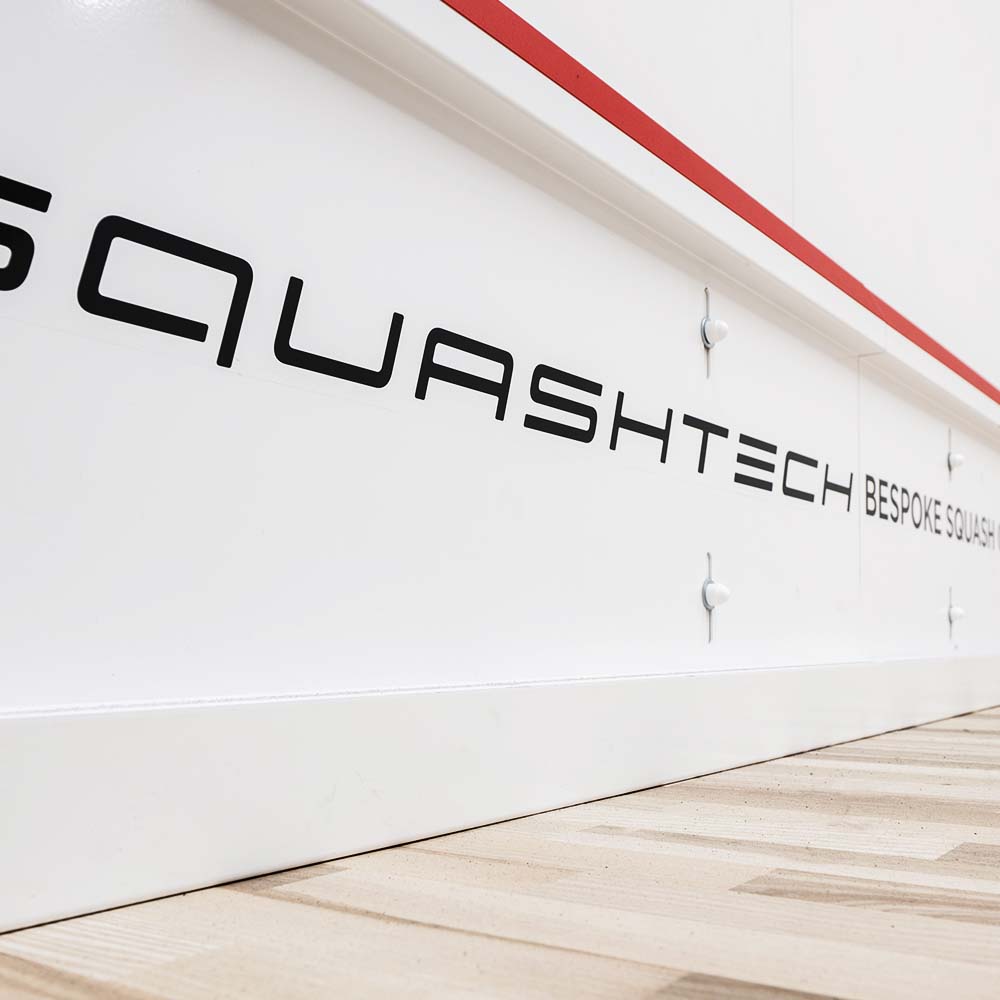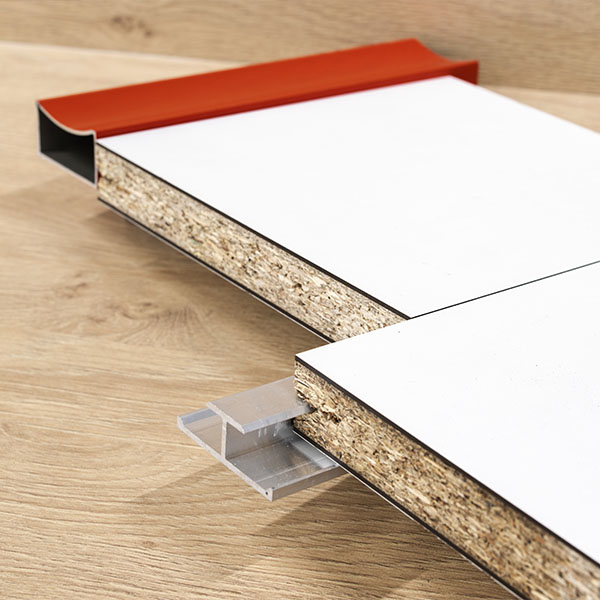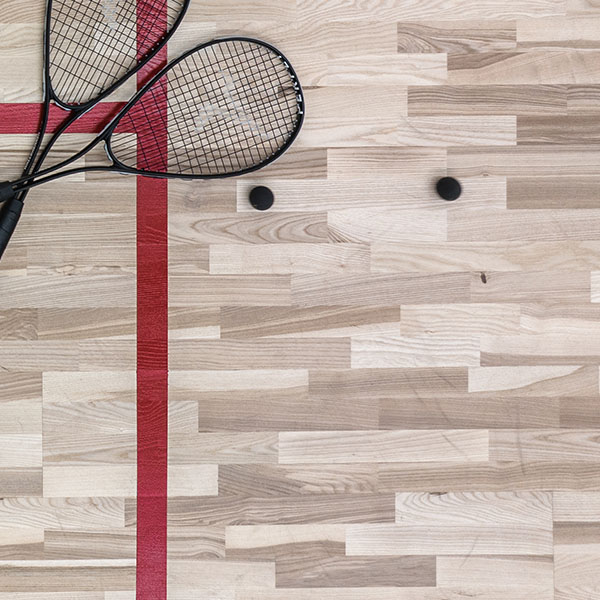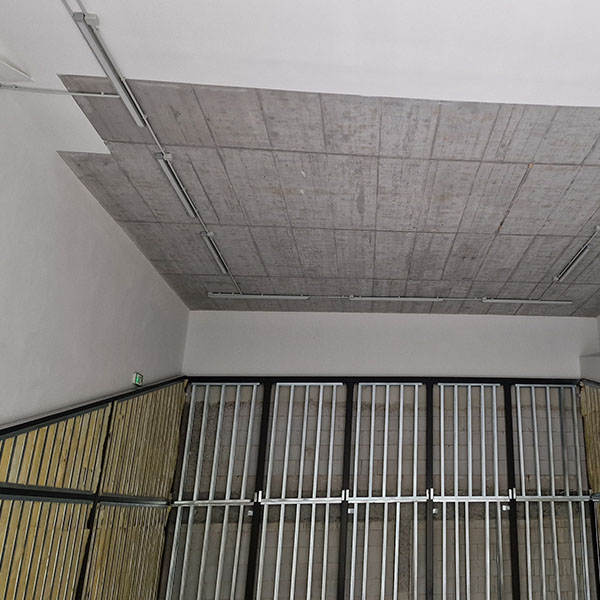Mounted at 43cm as standard, adjustable for players and during tournaments to 48cm. Powder coated.
TIN SHEET METAL

Adjustable TIN auto plate, made from 3mm thick curved aluminium sheet, meeting WSF requirements.
- Position: A TIN strip, also known as a 'tin' or 'auto plate'. , is a low metal slat placed on the front wall of the court, just above the floor.
- Function: The TIN strip plays a key role in the game of squash, determining the lowest point over which the ball must pass to score a point for the player. Contact between the ball and the TIN strip means a point is scored by the opponent.
- Dimensions: The TIN strip has standard dimensions, in accordance with WSF (World Squash Federation) regulations, to ensure consistency across all courts. This is essential for fair play.
- Construction: The TIN slat is typically made of aluminium, making it durable and resistant to regular ball contact. Its location on the front of the court makes it easy to clearly identify whether the ball has passed over the slat.
- Role in Scoring: Any touch of the ball with the TIN strip means a point is scored by the opponent. This is one of the key places on the court that determines scoring.
- Visibility: The TIN strip is usually painted a contrasting colour, making it easier for players and referees to monitor whether or not the ball has passed over the TIN strip.
- Adjustment: In its standard setting, the TIN bar is not adjustable. However, in some cases, particularly on practice courts, it may be possible to adjust its height to suit the difficulty of play.








